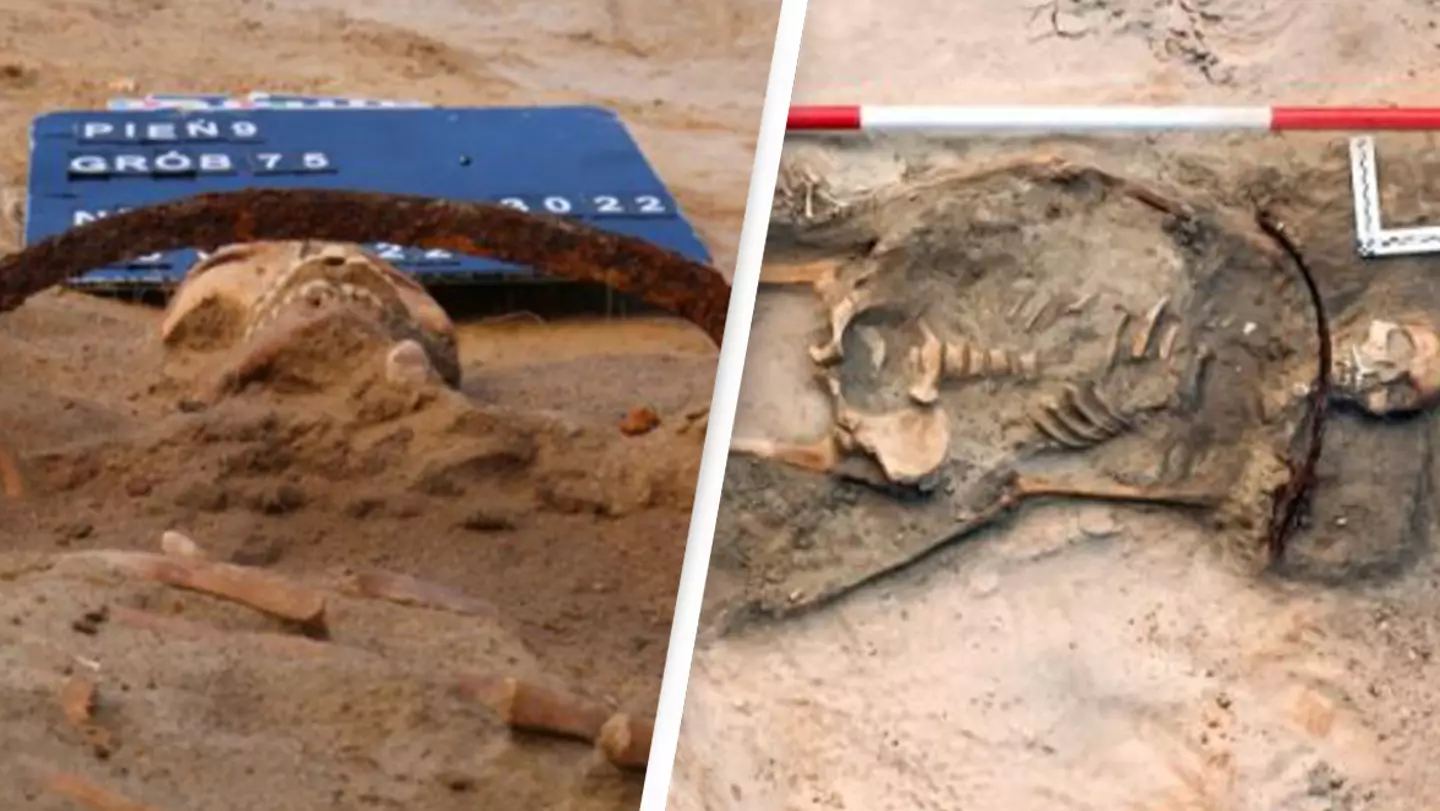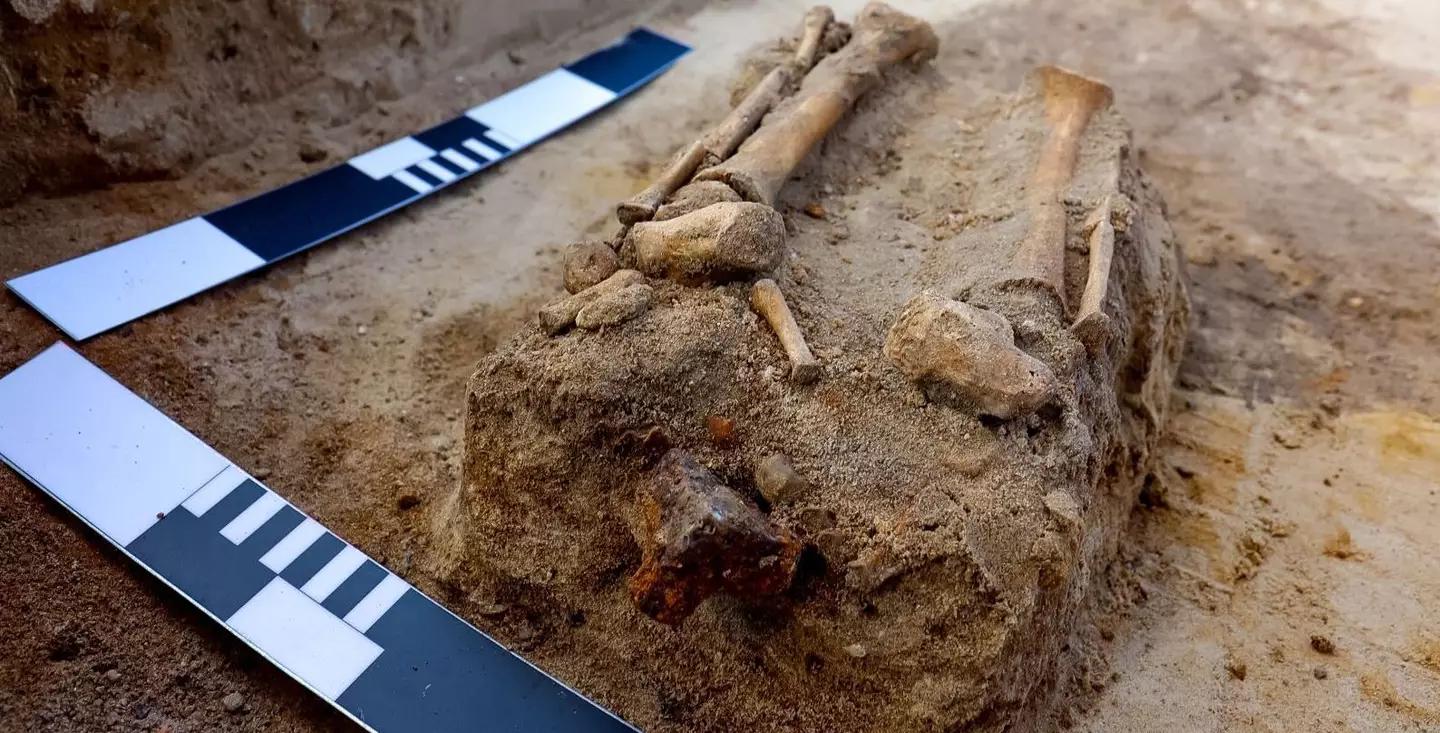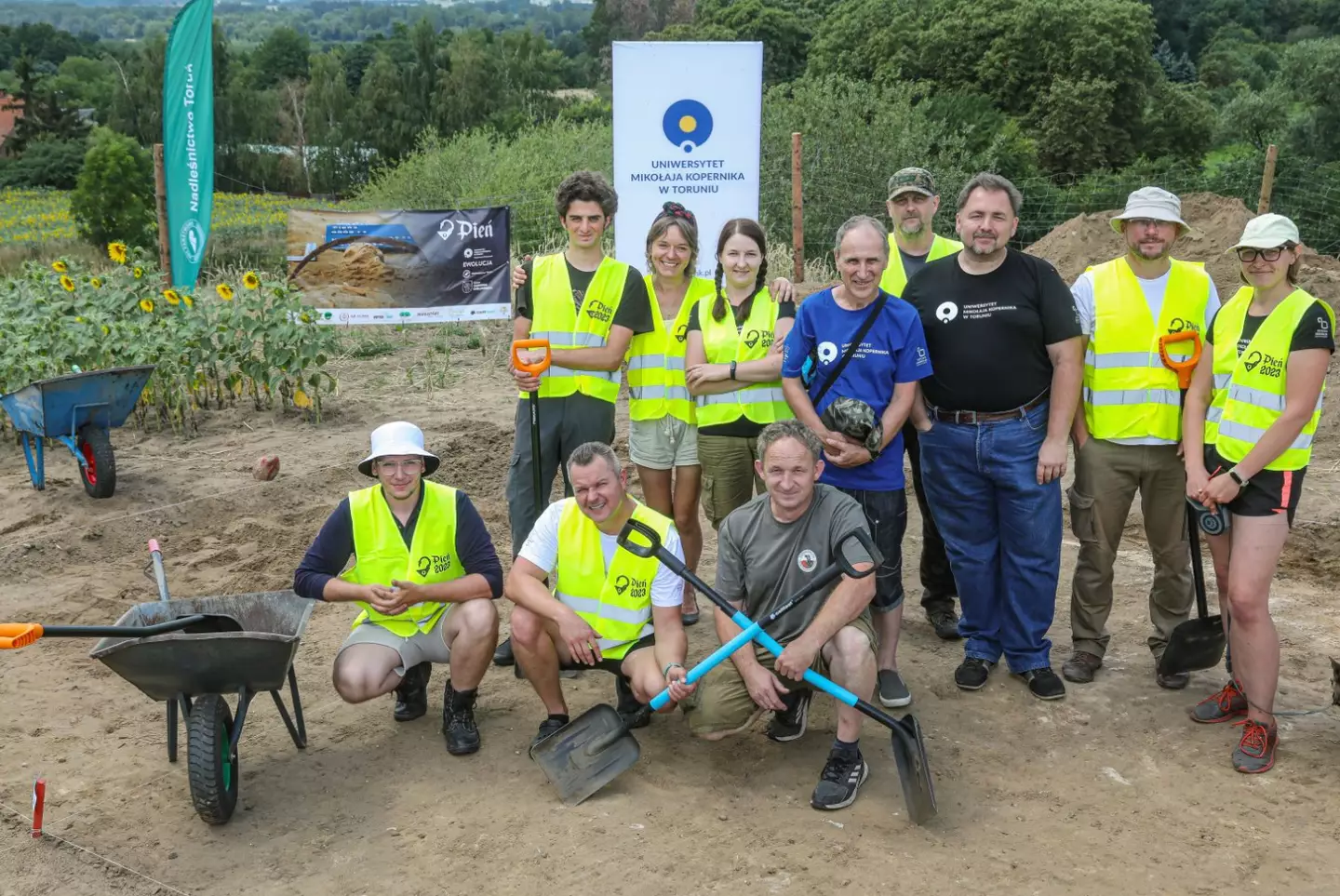
Potential 'vampire' remains have been discovered by archaeologists.
While we don't really know if vampires ever existed (or still exist), over the years many believed the undead creatures to be real - and it dates back much further than the Twilight saga.
In the 19th century there was the New England vampire panic, which saw deceased people's bodies being exhumed so that their internal organs could be burnt to prevent any vampires from attacking the local population.
Advert
This was off the back of a tuberculosis outbreak, which many believed to have been caused by the dead consuming the lives of their living family members.
Elsewhere, a body in Europe has been found with their teeth removed and an iron stake through its heart is what appeared to have been an anti-vampire ritual.
And another suspected anti-vampire ritual was discovered last year after Polish archaeologists found the remains of a woman and 'vampire child' that had been padlocked to their graves.

The remains of a young boy (thought to have been between the ages of five to seven years old) were found in a cemetery in the northern Polish village of Pien.
The child was faced down and had a padlock under their foot.
In the same cemetery, the body of a woman was also dug up last year and was discovered to have a padlock on her leg and a sickle around the neck - suggesting those who buried her in the 17th century believed she was a vampire.
Speaking about the findings, Dariusz Polinski, a researcher on medieval burials at Nicolaus Copernicus University (NCU) in the city of Toruń, said: "This is a cemetery for rejected people, who were certainly feared after death, and perhaps also during life who were suspected of having contacts with unclean forces, people who also behaved differently in some way."

As to why the boy was buried faced down, Polinski thinks it was to prevent the youngster from sitting up and rising from the dead to feed on the locals.
Elsewhere in the graveyard 'for rejected people', other means of preventing the dead from rising again were found.
"There were also a large number of graves with stones which were also supposed to protect against the deceased, placed in various places, for example on the elbow, on the larynx or on the neck," explained Polinski.
That doesn't sound very comfortable.
Topics: News, World News